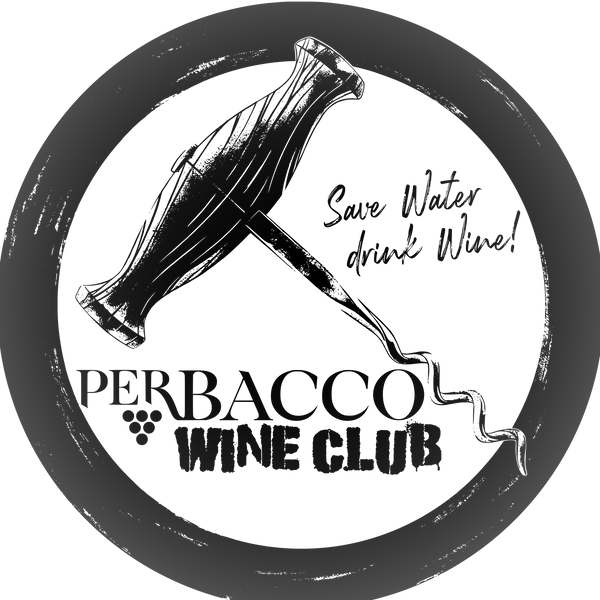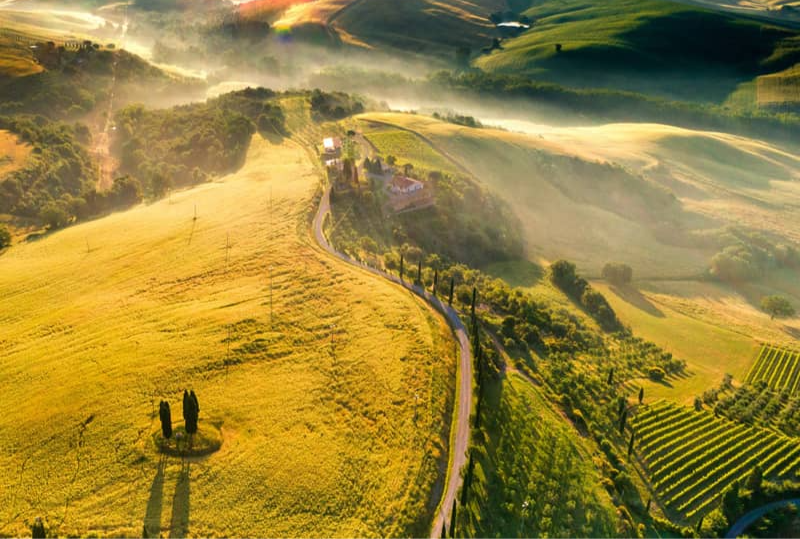Can you tell...? The truth is that almost nobody can tell actually... Starting with the name itself: Supertuscan, SuperTuscan, Super-Tuscan, Super tuscan or Super Tuscan?

Supertuscan wine definitions can be as numerous as the hills found throughout the Tuscan countryside and each winemaking region will have -not just one but- lots of different stories to relate on what a Supertuscan is, according to the local winemaking rules. Defining a Supertuscan is a tricky task as it is impossible to identify it by either the grapes used or the specific wine area where the wine is coming from. Grapes commonly used in Supertuscan wines vary from the classic Italian -but mostly Tuscan- vine called Sangiovese to French, mostly Bordeaux-style varieties, like Cabernet Sauvignon, Cabernet Franc, Petit Verdot, Merlot & Syrah. The influence of Bordeaux is apparent even in the very frequent adoption of French new-oak barrels, instead of the traditional big Italian barrel called Botte. A Supertuscan is usually rich, well-structured and full-bodied in its taste, with well-integrated tannins and spicy notes from the fresh oak and -most important- can age for a very long time, even for decades.

Use of international varieties is perhaps what can determine the difference between Supertuscans and the other types of wine found in Tuscany, like Chianti Classico, Brunello from Montalcino and Vino Nobile from Montepulciano, wines obtained by Sangiovese grapes mostly. Supertuscans can be divided into four different categories judging by the varietals included:
- Supertuscans produced by using a single international grape, like Masseto
- Supertuscans using blends of international grapes, mostly found around the Bolgheri area, like Sassicaia and Ornellaia
- Supertuscans made with Sangiovese blended with international grapes, like Tignanello
- or even Supertuscans based on the Sangiovese grape alone, like Flaccianello

When it comes to classification according to the Italian Wine Labelling and Certification system, the Supertuscan definition is indicating Tuscan red wines produced outside the "strict rules" of the DOC -Denominazione di Origine Controllata- and DOCG -Denominazione di Origine Controllata e Garantita- specifications and made after blending international grapes (mostly of French origin) instead of -or in addition to- the traditional Sangiovese. That is the reason why almost all Supertuscans are part of the IGT -Indicazione Geografica Tipica- level of classification.


The first ever bottle of Supertuscan is considered to be Vigorello San Felice, from Castelnuovo Berardenga in the Chianti Classico area, produced in 1968. Big international success though, was achieved with Tignanello from Antinori, a wine which, in 1971, passed from its previous DOC status as a Chianti Classico Riserva Vigneto Tignanello, first by eliminating the white grapes which were compulsory for a Chianti DOC bottle of wine, to gradually adding different French varieties and finally getting to the IGT Supertuscan status.

In any case the custom of blending French grapes with Sangiovese was already common in Carmignano, a city close to the Tuscan city of Prato, since the 17th century, when Cabernet vines (called Francesca grapes) were imported from France by the Medici family. Carmignano wine can therefore be considered de facto the first Supertuscan in the history of Italian wines.

The wine that made Supertuscans famous all over the world is Sassicaia, one of the first Italian reds to be produced using the classic Bordeaux style. It all started long before the arrival of the 1968 Vigorello, already in the 1940s, when Marchese Mario Incisa della Rocchetta, lover of Bordeaux wines, after he had moved to the Bolgheri region of Tuscany, felt the need to go beyond the existing wine production rules by pairing the Tuscan soil with the Bordeaux tradition. He imported and planted Cabernet Franc grapes from the -now famous- Chateau Lafite, catching the attention of his nephew Piero Antinori who included Cabernet Sauvignon in the blend. For the following two decades, Sassicaia -name meaning rocky soil, exactly the type of soil of that specific vineyard in Tenuta San Guido in Bolgheri, very close to the gravelly soil that is considered evocative of Graves and Haut-Médoc in Bordeaux- was never released commercially, instead it was drunk privately, predominantly on the estate. In 1968 Sassicaia was released for the first time to the public and was received very well by wine experts around the world.

With time, the concept of Supertuscans has expanded to include a lot of iconic wines, obtained either from French varieties or Sangiovese, all made outside the regulations of the DOC or DOCG classification. In any case, although there are various exceptions of single-varietal wines (especially Merlot) or Sangiovese and some other complementary regional vines, Supertuscan wines are still mainly associated with the Bordeaux blend and therefore with the art of blending.
Did you know? In Montepulciano, there is not just Rosso and Nobile! We do have Supertuscans! If you want to try a little bit of Montepulciano boarding the train to Bordeaux, here is a list:
- Le Stanze from Poliziano, Cabernet Sauvignon & Merlot
- Pietrose from Talosa, 100% Merlot
- Sancta Catharina from Dei, Sangiovese with Merlot, Cabernet Sauvignon & Petit Verdot


